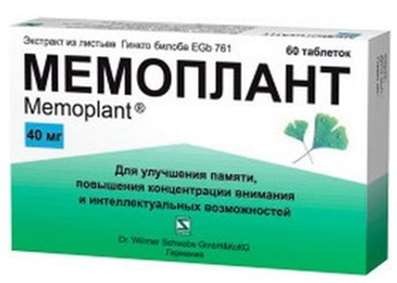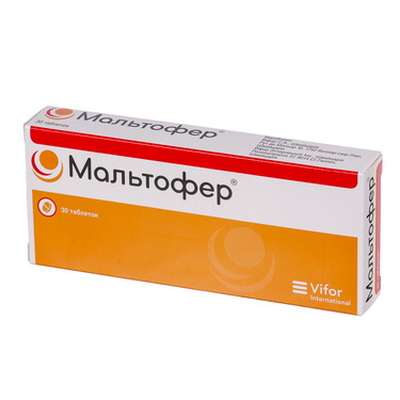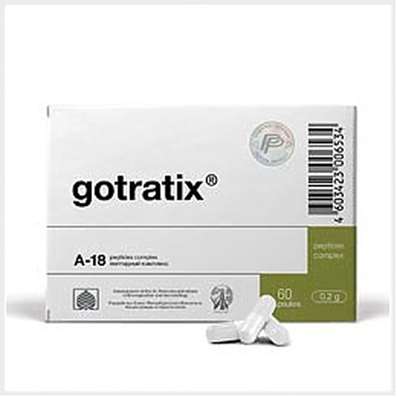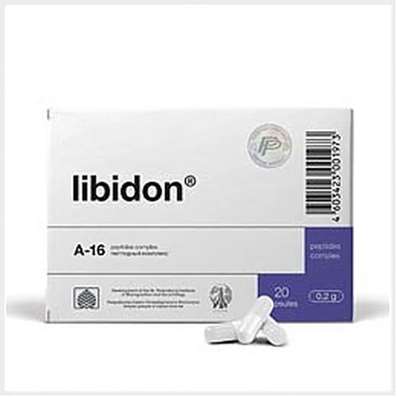Instruction for use: Risset
I want this, give me price
Dosage form: tablets
Active substance: Risperidone*
ATX
N05AX08 Risperidone
Pharmacological group:
Neuroleptics
The nosological classification (ICD-10)
F03 Dementia, unspecified: Degenerative dementia; Dementia; Dementia presenilnaya; Dementia senile; Primary degenerative dementia; Senile dementia; Senile dementia of the Alzheimer's type; Senile dementia; Syndromes of dementia; Dementia; Mixed Dementia; Mixed forms of dementia; Senile dementia; Senile Dementia
F20 Schizophrenia: Schizophrenic Conditions; An exacerbation of schizophrenia; Schizophrenia; Chronic schizophrenia; Dementia praecox; Bleuler's disease; Psychotic discordant; Dementia early; The febrile form of schizophrenia; Chronic schizophrenic disorder; Psychosis of the schizophrenic type; Acute form of schizophrenia; Acute schizophrenic disorder; Cerebral Organic Insufficiency in Schizophrenia; Acute attack of schizophrenia; Schizophrenic psychosis; Acute schizophrenia; Sluggish schizophrenia; Sluggish schizophrenia with apathoabulic disorders; Acute stage of schizophrenia with agitation
F22.0 Delusional Disorder: Delirium; Acute paranoid state; Othello Syndrome; Paranoid-hallucinatory state; Paranoid state; Paranoid delirium; paranoid psychosis; Paranoid delirium; Attack of delirium; The attack of polymorphic delirium; Psychotic disorder with a predominance of hallucinatory-paranoid symptoms and disorders of thinking; Anxious-delirious component; Anxiety and Paranoid Syndrome
F23.9 Acute and transient psychotic disorder, unspecified: Psychotic disorder; Somatized Mental Disorder; Acute psychotic disorder; Reactive psychosis
F31.1 Bipolar affective disorder, current episode of mania without psychotic symptoms: Mania in bipolar disorders
F31.2 Bipolar affective disorder, current episode of mania with psychotic symptoms: Manic episode of bipolar disorder; Mania in bipolar disorders
F39 Mood disturbance [affective], unspecified: Affective disorder; Affective disorders; Dysphoric states; Dysphoric disorder; Psychoemotional Disorder; Affective disorders; Emotional-labile upset; Cyclotimic personality
F69 Disorder of personality and behavior in adulthood, unspecified: Anhedonia; Anomaly of character; Autism; Pathological character; Pathological personality development; Character disorders; Coprolalia
F79 Mental retardation, unspecified: Mental retardation; Infantilism mental; Violation of mental activity; Oligophrenia; Lag behind mental development; Slowed development of intellectual abilities in children and adolescents; Delayed mental development in children; Maloumia; Oligopsihia; Mental failure; Impaired mental function; Lag behind in mental development; Lack of intellectual development in children; Lack of mental development in children; Mental retardation; Lack of mental development in children; Mental retardation
F91 Behavioral disorders: Juvenile and other behavioral disorders; Destructive behavior; Violation of behavior; Behavior Disorders; Mixed behavioral disorders; Behavioral Disorder; Behavioral disorder in adolescents with 15 years of age and adults; Violations in behavior; Behavioral disorders in childhood; Behavioral disorders in old age; Behavioral disorders in children; Behavioral disorders in children
R41.8.0 * Intellectual-mnestic disorders: Secondary impairments of mnestic functions; Difficulty concentrating; Difficulty of mental activity; Intellectual insufficiency; Intellectual-mnestic violation; Intellectual-mnestic disorder; Infantilism mental; Cognitive impairment; Intellectual disability; Breach of mnestic functions; Violation of mental activity; Thinking disorder; Impairment of mental performance; Dysfunction of mental function; Thinking disorders; The weakening of intellectual productivity; Lag behind mental development; Primary disorders of mnestic functions; Decrease in intellectual productivity; Decrease of intellectual-mnestic functions; Scattering; Mental Disorders; Disorder of thinking; Decreased intellectual productivity; Reduction of intellectual-mnestic functions; Decreased intellectual capacity; Decreased intellectual ability; Decreased intellectual abilities in elderly patients; Decreased mental function; Decreased memory in old age; Decreased mental activity; Decreased intellectual level; The deterioration of intellectual-mnestic functions; Chronic mental performance disorders
R45.1 Anxiety and agitation: Agitation; Anxiety; Explosive excitability; Internal stimulation; Excitability; Excitation; Excitation acute; Psychomotor agitation; Hyperexcitability; Motor excitement; Cessation of psychomotor agitation; Nervous excitement; Restlessness; Night trouble; Acute stage of schizophrenia with agitation; Acute mental agitation; Paroxysm of excitation; Overexcitation; Increased excitability; Increased nervous excitability; Increased emotional and cardiac excitability; Increased agitation; Mental arousal; Psychomotor agitation; Psychomotor agitation in psychoses; Psychomotor agitation of an epileptic nature; Psychomotor paroxysm; Psychomotor fit; Symptoms of Excitation; Symptoms of psychomotor agitation; The state of agitation; A state of anxiety; Excitation status; A state of heightened concern; The state of psychomotor agitation; Conditions of anxiety; Excitation conditions; The state of excitement in somatic diseases; Excitation level; Feelings of anxiety; Emotional arousal
R45.4 Irritability and anger: Neurosis with increased irritability; Outbreaks of anger; Anger; Resentment; Increased irritability; Increased irritability of the nervous system; Irritability; Irritability with neuroses; Irritability in psychopathic disorders; Symptoms of irritability; Dysphoria
R45.6 Physical aggressiveness: Aggressiveness; Aggressive states; Aggression; Aggressive behavior; Autoaggression
Composition
Tablets covered with a film membrane 1 tab.
active substance:
risperidone 1 mg; 2 mg; 3 mg; 4 mg
auxiliary substances: lactose monohydrate - 33/66/99/132 mg; MCC - 14,121 / 28,243 / 42,364 / 56.486 mg; corn starch - 8,621 / 17,243 / 25,864 / 34,486 mg; sodium carboxymethyl starch - 2.5 / 5 / 7.5 / 10 mg; talc - 0.379 / 0.757 / 1.136 / 1.514 mg; magnesium stearate 0.379 / 0.757 / 1.136 / 1.514 mg
film membrane: Opadry II 31F58914 white (hypromellose, lactose monohydrate, titanium dioxide (E171), macrogol 4000, sodium citrate dihydrate) - 2.5 / 4.972 / 7.479 / 9.91 mg; dye "Sunset Sunset" yellow (E110) - - / 0,028 / - / - mg; dye quinoline yellow (E104) - - (-) 0.021 / 0.075 mg; indigo carmine (E132) - - / - / - / 0.015 mg
Description of dosage form
Tablets 1 mg: round, biconvex tablets, covered with a film coating of white color, with a risk on one side.
Tablets 2 mg: round, biconvex tablets, covered with a film shell of light orange color, with a risk on one side.
Tablets 3 mg: round biconvex tablets, covered with a film coating of yellow with a greenish tint of color, with a risk on one side.
Tablets 4 mg: round biconvex tablets, coated with a film membrane of green color, with a risk on one side.
Pharmachologic effect
Pharmacological action - antipsychotic, neuroleptic.
Pharmacokinetics
Absorption is fast and complete (food does not affect the completeness and absorption rate). Absolute bioavailability - 74%; relative (tablets as compared to the solution) - 94%. Tmax in risperidone plasma - 1 hour; 9-hydroxyrisperidone - 3 hours (with high activity of the isoenzyme CYP2D6) and 17 hours (with low activity of the isoenzyme CYP2D6).
Css risperidone in the body in most patients is achieved within 1 day, and 9-hydroxyrisperidone - 4-5 days. Concentrations of risperidone and 9-hydroxyrisperidone in plasma are proportional to the dose of the drug (within 1-16 mg / day). Quickly distributed throughout the body, penetrates into the central nervous system, breast milk. Vd - 1-2 l / kg. The association with plasma proteins (with α1-acid glycoprotein and albumins) of risperidone - 90%, 9-hydroxyrisperidone - 77%.
Metabolized by the isoenzyme CYP2D6 to the active metabolite of 9-hydroxyrisperidone (risperidone and 9-hydroxyrisperidone constitute the active antipsychotic fraction). Another way of metabolism is N-dealkylation.
T1 / 2 risperidone - 3 hours (with a high activity of the isoenzyme CYP2D6) and 20 hours (with a low activity of the isoenzyme CYP2D6), T1 / 2 9-hydroxyrisperidone - 21 hours (with a high activity of the isoenzyme CYP2D6) and 30 hours (with a low activity of the isoenzyme CYP2D6 ); active antipsychotic fraction - 20 h.
It is excreted by the kidneys 70% (35-45% in the form of a pharmacologically active antipsychotic fraction) and with bile (14%).
In chronic renal failure (CRF), the clearance of creatinine is reduced by 60%.
In liver failure, the content of risperidone in plasma is increased by 35%.
In elderly patients, clearance decreases and T1 / 2 lengthens.
Indication for the Risset
Coping with acute attacks and prolonged maintenance therapy of the following diseases and conditions:
acute and chronic schizophrenia and other psychotic disorders with productive and negative symptoms;
affective disorders in schizophrenia;
behavioral disorders in patients with dementia in the manifestation of symptoms of aggression (outbursts of anger, physical abuse), impaired performance (agitation, delirium) or psychotic symptoms;
behavioral disorders in adolescents with 15 years of age and adult patients with a reduced intellectual level or mental retardation in cases where destructive behavior (aggressiveness, impulsivity, autoaggression) is leading in the clinical picture of the disease;
treatment of mania in bipolar affective disorders (as a means of supporting therapy in order to stabilize the mood).
Contraindications
hypersensitivity to the components of the drug;
lactation period;
children under 15 years of age (effectiveness and safety not established);
mania in bipolar affective disorders in children under the age of 18 (efficacy and safety not established);
deficiency of lactase, lactose intolerance, glucose-galactose malabsorption.
With caution: CVS diseases (chronic heart failure, myocardial infarction, conduction of cardiac muscle conduction); conditions predisposing to the development of tachycardia such as "pirouette" (bradycardia, electrolyte imbalance, concomitant drug use, prolonging the QT interval); risk factors for thromboembolism of venous vessels; dehydration and hypovolemia; impaired cerebral circulation; brain tumor, incl. prolatonoma of the pituitary gland; Parkinson's disease; disease of diffuse Levi bodies; convulsions (including in the anamnesis); severe renal insufficiency; severe hepatic impairment; drug abuse or drug dependence; intestinal obstruction; acute drug overdose; Reye syndrome (antiemetic effect of risperidone can mask the symptoms of these conditions); pregnancy; elderly patients with dementia.
Application in pregnancy and lactation
The safety of risperidone during pregnancy has not been studied. The use of risperidone during pregnancy is only possible if the expected benefit to the mother exceeds the potential risk to the fetus.
Because risperidone and 9-hydroxyrisperidone penetrate into breast milk, if you need to use the drug during lactation should stop breastfeeding.
Side effects
From the central and peripheral nervous system: insomnia, agitation, anxiety, headache; drowsiness, increased fatigue, dizziness, decreased ability to concentrate, blurred vision; mania, hypomania, extrapyramidal symptoms (tremor, rigidity, hypersalivation, bradykinesia, akathisia, acute dystonia).
In patients with schizophrenia, hypervolemia (either due to polydipsia or due to the syndrome of inappropriate ADH secretion), tardive dyskinesia (involuntary rhythmical movements predominantly of the tongue and / or face), malignant neuroleptic syndrome (hyperthermia, muscle rigidity, instability of autonomic functions, violation consciousness and increased activity of CKK), thermoregulation disorders and epileptic seizures.
From the digestive system: constipation, dyspepsia, nausea or vomiting, abdominal pain, increased activity of hepatic transaminases, dryness of the oral mucosa, hypo- or hypersalivation, anorexia, increased appetite.
On the part of the CAS: orthostatic hypotension, reflex tachycardia, increased blood pressure, prolongation of the QT interval, ventricular arrhythmia of the type "pirouette", ventricular fibrillation, stroke and transient ischemic attacks (in elderly patients with dementia), thromboembolism of venous vessels, incl. thromboembolism of pulmonary vessels and deep veins.
On the part of the hematopoiesis system: neutropenia, thrombocytopenia.
On the part of the endocrine system: galactorrhea, gynecomastia, menstrual irregularities, amenorrhea; increase or decrease in body weight, hyperglycemia and exacerbation of pre-existing diabetes.
On the part of the reproductive system: priapism, erectile dysfunction, ejaculatory disorders, anorgasmia.
From the urinary system: urinary incontinence, urinary tract infection.
From the skin: dry skin, hyperpigmentation, itching, seborrhea.
Allergic reactions: rhinitis, rash, angioedema, photosensitivity.
Other: arthralgia.
Interaction
Considering that APS, incl. risperidone, have an impact primarily on the central nervous system, they should be used with caution in combination with other drugs of central action.
Risperidone enhances the effect of ethanol, narcotic analgesics, H1-histamine receptor blockers and benzodiazepines.
For the treatment with risperidone, benzodiazepines can be added if an additional sedative effect is required.
When therapy with a combination of risperidone with other APS, lithium, antidepressants, antiparkinsonics, drugs with a central anticholinergic effect increases the risk of developing tardive dyskinesia.
Risperidone has no effect on the clinical effect and pharmacokinetics of lithium, valproic acid, digoxin and topiramate, therefore, with such combinations, dose adjustment is not required.
Risperidone reduces the effectiveness of levodopa and other dopamine receptor agonists. A similar effect is possible with risperidone in combination with other inducers of microsomal liver enzymes such as barbiturates, rifampicin, phenytoin and St. John's wort. In this case, the dose of risperidone should be reviewed.
Do not prescribe the drug in conjunction with carbamazepine to patients with mania in bipolar affective disorder. When carbamazepine is used, the concentration of the active antipsychotic phase of risperidone in plasma is decreased. Clozapine reduces the clearance of risperidone.
Phenothiazine derivatives, tricyclic antidepressants and some β-blockers can increase the concentration of risperidone in plasma, but the concentration of the active antipsychotic phase does not change.
Quinidine, fluoxetine, paroxetine, terbinafine and other inhibitors of the CYP2D6 isoenzyme may increase the plasma concentration of risperidone and, to a lesser extent, the concentration of the active antipsychotic phase.
Cimetidine and ranitidine increase the concentration of risperidone in plasma, but the antipsychotic effect does not increase.
Simultaneous use of risperidone with furosemide in elderly patients with cerebrovascular dementia was associated with high mortality. The mechanism of such interaction has no clear explanation. It is necessary to evaluate the ratio of potential benefit and possible risk for these patients with the simultaneous use of risperidone and diuretics, incl. furosemide. Risperidone can increase blood pressure, reducing the effectiveness of phenoxybenzamine, labetalol and other α-blockers, reserpine, methyldopa and other antihypertensive agents of central action. The lowering of AD effect of guanethidine is blocked by risperidone. The concomitant use of risperidone with drugs extending the QT interval, such as other APS, antiarrhythmic agents of the IA and III classes, moxifloxacin, erythromycin, methadone, mefloquine, erythromycin, tricyclic antidepressants, lithium and cisapride, requires attention and caution.
It is necessary to be careful with the concomitant use of risperidone with drugs that can cause disturbances in electrolyte metabolism, such as thiazide diuretics (hypokalemia). This combination increases the risk of developing a malignant arrhythmia.
Dosing and Administration
Inside.
Schizophrenia
1 or 2 times a day. The initial dose is 2 mg / day. On the 2nd day the dose should be increased to 4 mg / day. From this moment, the dose can either be maintained at the same level, or, if necessary, adjusted individually. Usually the optimal dose is 4-6 mg / day. In a number of cases, for example, in patients with a newly developed episode of the disease, a slower dose increase and lower initial and maintenance doses may be justified.
When applied at doses of more than 10 mg / day, there was no increase in the therapeutic effect compared with smaller doses, with the appearance of extrapyramidal symptoms. The maximum daily dose is 16 mg.
For elderly patients, an initial dose of 0.5 mg 2 times a day is recommended. If necessary, the dose can be increased to 1-2 mg 2 times a day.
In diseases of the liver and kidneys, an initial dose of 0.5 mg 2 times a day is recommended. This dose can be gradually increased to 1-2 mg 2 times a day.
Behavioral disorders in patients with dementia
For most patients, the optimal dose is 0.5 mg 2 times a day. The dose can be increased by no more than 0.5 mg, not more often than every other day. However, some patients receive 1 mg twice daily. When the optimal dose is reached, it can be recommended to take 1 time per day.
Behavioral disorders in patients with mental retardation
The initial dose is 0.5 mg once a day. The dose can be increased by no more than 0.5 mg, not more often than every other day. The usual maintenance dose is 1 mg 1 time per day. Dosing interval 0.5-1.5 mg once a day.
Mania in bipolar affective disorders
The initial dose is -2 mg once a day. Then the dose is selected individually, increasing it by 1 mg / day, not more often than every other day. In most cases, the optimal dose is 2-6 mg / day.
As with any symptomatic therapy, the effectiveness should be assessed during treatment and, if necessary, the dosage regimen should be adjusted.
For elderly patients, an initial dose of 0.5 mg 2 times a day is recommended. If necessary, increase the dose to 1-2 mg 2 times a day.
In diseases of the liver and kidneys, an initial dose of 0.5 mg 2 times a day is recommended. The dose can be gradually increased to 1-2 mg 2 times a day.
Overdose
Symptoms: increased pharmacological effects - drowsiness, sedation, tachycardia, lowering of blood pressure, extrapyramidal symptoms. It was reported about taking the drug in a dose of 360 mg. The data obtained suggest a wide range of drug safety. In rare cases, an overdose marked an elongation of the QT interval. In case of acute overdose with combined therapy, one should keep in mind the possibility of taking several drugs.
Treatment: should achieve and maintain free airway to ensure adequate oxygen supply and ventilation; gastric lavage (after intubation, if the patient is unconscious) and the appointment of activated charcoal together with laxatives. Immediately begin monitoring the ECG to detect possible arrhythmia. There is no specific antidote. It is necessary to conduct appropriate symptomatic therapy. Decrease in blood pressure and collapse should be eliminated with intravenous fluid infusions and / or adrenomimetics. In case of development of acute extrapyramidal symptoms, m-holinoblockers should be used. Continuous medical surveillance and monitoring should continue until the symptoms of intoxication disappear.
Special instructions
When schizophrenia, before treatment with risperidone, it is recommended to gradually cancel the previous therapy, if it is clinically justified. If patients are transferred from depot therapy to APS, it is advisable to start the treatment instead of the next scheduled injection. Periodically, the need to continue current therapy with anti-Parkinsonics should be assessed.
Risperidone for children can be prescribed only by a doctor with special training in child psychiatry.
Risperidone should be used with caution in elderly patients with dementia, incl. when taking furosemide and other diuretics.
A meta-analysis of the results of 17 controlled clinical trials showed an increased mortality of elderly patients with dementia (mean age 86 years) who received atypical APS, incl. risperidone, compared with placebo. Among patients treated with risperidone and placebo, mortality was 4% and 3.1%, respectively.
For elderly patients with dementia taking risperidone, there was an increased mortality in patients taking furosemide and risperidone, compared with the group taking only risperidone and the furosemide-only group. There are no pathophysiological mechanisms that explain this observation. There was no increase in mortality in elderly patients concurrently taking other diuretics with risperidone. Regardless of treatment, dehydration is a common risk factor for mortality and should be carefully monitored in elderly patients with dementia.
In placebo-controlled studies, an increased incidence of cerebrovascular accidents (stroke and / or transient ischemic attacks), including those in the blood vessel, was detected. with fatal outcome, in elderly patients with dementia who received some atypical APS, incl. risperidone, compared with placebo.
In patients with SSS, as well as with dehydration, hypovolemia or cerebrovascular disorders, the dose should be increased gradually. When orthostatic hypotension occurs, especially in the initial period of dose selection, consideration should be given to reducing the dose.
APS, incl. risperidone, promote the development of thromboembolic complications in patients with a predisposition to the formation of thrombi. Before starting risperidone therapy, all possible risk factors for venous thromboembolism should be identified and appropriate measures taken to prevent the development of thromboembolic complications.
The risk of developing mania or hypomania can be significantly reduced by applying low doses or gradually increasing them.
If there are signs and symptoms of tardive dyskinesia or malignant neuroleptic syndrome, you must abolish all APS, including. risperidone, conduct symptomatic therapy and consider resuming APS therapy. To prevent the development of malignant neuroleptic syndrome against the backdrop of treatment with APS, it is necessary to regularly adjust the dose taken. It is necessary to carefully evaluate the ratio of potential benefit and possible risk to the use of risperidone in patients with diffuse Lewy body disease and Parkinson's disease, since such patients may have an increased risk of developing a neuroleptic malignant syndrome and increased sensitivity to APS. With the withdrawal of carbamazepine and other inducers of microsomal liver enzymes, the dose of risperidone should be reduced.
Patients should be advised to refrain from overeating due to the possibility of weight gain.
Influence on the ability to drive a car and work with machinery. During the treatment period, care must be taken when driving vehicles and engaging in other potentially hazardous activities that require increased concentration and speed of psychomotor reactions.
Release form
Tablets, film-coated, 1 mg, 2 mg, 3 mg, 4 mg. For 10 tab. in a blister of PVC / PVDC / aluminum foil; 2 or 6 blisters in a pack of cardboard.
Conditions of leave from pharmacies
On prescription.
Storage conditions for Risset
In a place protected from moisture, at a temperature of no higher than 25 ° C.
Keep out of the reach of children.
Shelf life of Risset
30 months.
Do not use after the expiry date printed on the package.

 Cart
Cart





